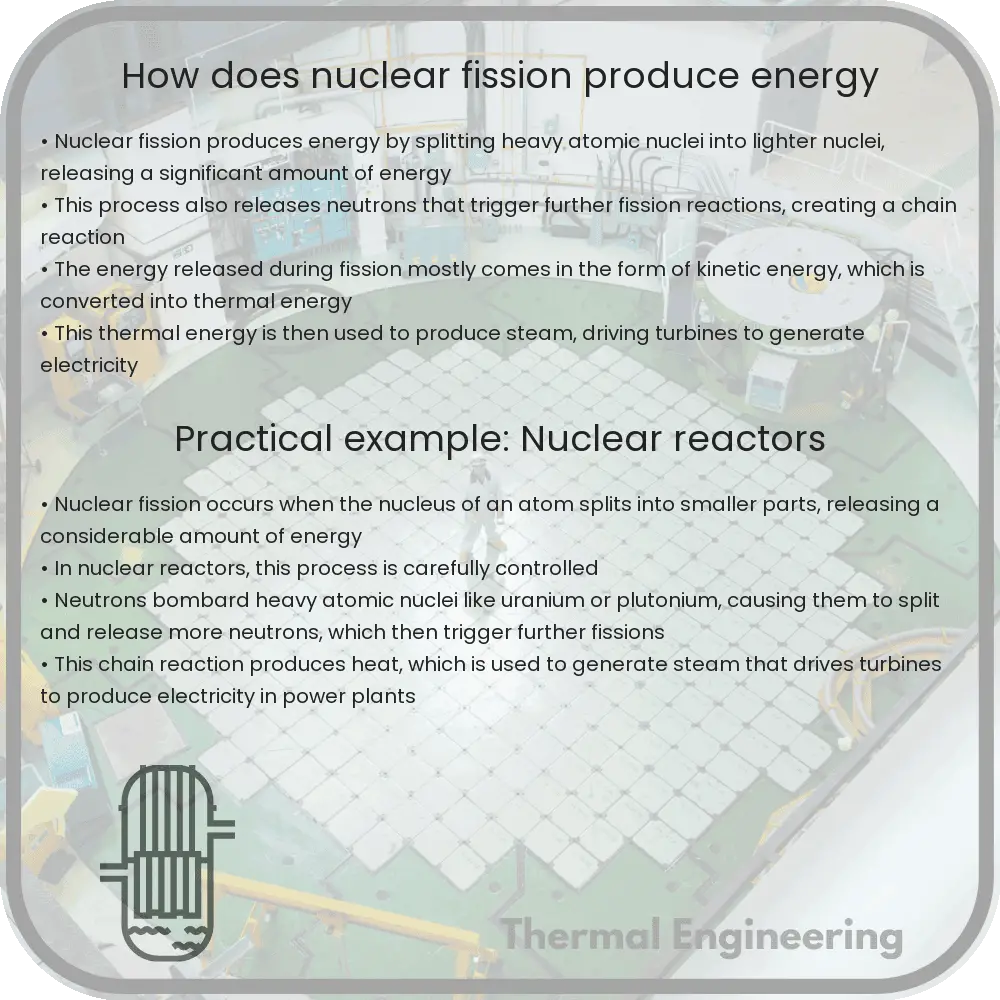“Nuclear fission” is a process where an atom’s nucleus splits into smaller parts, releasing neutrons and significant energy, primarily used in nuclear power plants for electricity generation.

How Does Nuclear Fission Produce Energy?
Nuclear fission is a process where the nucleus of an atom splits into two smaller nuclei along with a few neutrons and a large amount of energy. This fundamental reaction is the core mechanism used in nuclear power plants to produce electricity. Let’s explore how this significant energy release occurs and how it is harnessed to generate power.
Understanding the Fission Process
In nuclear fission, a heavy nucleus absorbs a neutron, becoming unstable and dividing into two new nuclei. This process can be represented by a simple equation for the fission of uranium-235 (U-235), one of the most common fuel isotopes in nuclear reactors:
235U + n → 142Xe + 91Sr + 3n + Energy
Here, a uranium-235 nucleus absorbs a neutron (n), and splits into xenon-142 (Xe-142), strontium-91 (Sr-91), and releases three more neutrons plus a considerable amount of energy.
Release of Energy
The energy released during fission comes primarily from the nuclear strong force, a fundamental force that binds the particles (protons and neutrons) in the nucleus together. When the nucleus splits, the strong force acts over a smaller range, and the excess binding energy is expelled. This energy is emitted in several forms:
- Kinetic Energy of Fission Fragments: The fission fragments (the smaller nuclei) are driven apart by repulsive forces and move away at high speeds, carrying kinetic energy.
- Gamma Rays: High-energy gamma rays are released, carrying away energy in the form of electromagnetic radiation.
- Neutron Release: Additional neutrons are emitted, which can propagate the fission process in a chain reaction.
- Beta Particles: Some of the fission products are radioactive and undergo beta decay, releasing beta particles and more gamma rays.
Harnessing Fission Energy in Nuclear Reactors
In a nuclear reactor, the fission process is carefully controlled to manage the energy release. The core of a nuclear reactor contains the fuel (usually enriched uranium or plutonium), which is arranged in rods to maintain a controlled chain reaction. Here’s how the process works:
- Initiation: Neutrons are introduced to the reactor core, absorbing into the fuel nuclei to begin the fission process.
- Control: Control rods made of materials like cadmium or boron absorb excess neutrons to ensure the chain reaction does not accelerate uncontrollably.
- Heat Production: The kinetic energy of the fission fragments is transferred to the surrounding reactor coolant (water or gas), heating it up.
- Steam Generation: The heated coolant generates steam in boilers or steam generators.
- Electricity Generation: The steam drives turbines connected to generators, producing electricity.
Heat exchanged in the reactor is thus converted into mechanical energy via the turbines and finally into electrical energy by the generators.
Significance and Challenges
Nuclear fission provides a powerful source of energy that can generate large amounts of electricity without the carbon emissions associated with fossil fuels. However, it also presents significant challenges, including managing radioactive waste, ensuring reactor safety to prevent accidents, and political and social concerns relating to the use of nuclear technology.
In conclusion, nuclear fission is a complex yet fascinating process that highlights the intricate interplay of physics in power generation, providing a substantial portion of the world’s energy with its unique set of pros and cons.